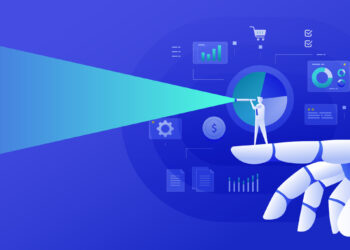
- Image by Mr. Wright via Flickr
A premise of the Internet publishing revolutionaries has been that because distribution is ubiquitous, the marginal cost of content approaches zero, meaning that information should become much cheaper than it once was. In fact, it should be free once a modicum of cost is paid for — hence, the open access model, for instance, or the devalued online access prices for institutional access, for another instance.
You still hear this argument, even though real-world economics seem to defy the logic. Just this year, Clay Shirky invoked the “marginal cost” argument in his most recent book, “Cognitive Surplus,” stating that, “Information can now be made globally available, in an unlimited number of perfect copies, at zero marginal cost.”
However, for those of us inside the belly of the beast, just the opposite seems to be happening. That is, digital publishing seems to be getting more expensive while we wring costs out of print as we draw it down.
One problem seems to be in the model we’re using to describe the costs involved with digital publishing, relying on a manufacturing model rather than a more suitable model that involves sustaining and spreading fixed costs across a longer time horizon — that is, the software model or, as I’ll explore later, the model being used by digital distributors.
The software model arrives at pricing by spreading the costs (and profit expectations) of a product across its anticipated customer base for a particular release and support timeframe. If we begin to think of content as software — issues as releases, support as provision and maintenance — and have a relatively stable customer base, we can begin pricing online properly. We just need to allocate the costs properly.
Because we’re using the wrong model, we can confuse fixed costs with sunk costs, marginal costs with average costs — all while not taking into account the time horizon we’re after for maintaining access to digital information, the trajectory of improvement and diversification required in a flourishing digital ecosystem, and the cost of human talent.
One part of the digital economy has gotten the model right — distribution providers.
Distribution has become a major expense for consumers — I talked about this earlier this year, showing how spending on Internet access alone is now double what people were paying for information in 1999. And this doesn’t even include things like cell phone bills, text messaging charges, or the price of devices.
It’s been noted that the high prices of distribution hammer societies unfairly. For instance, a recent article in the Guardian argues that libraries remain important because they provide Internet access to economically disadvantaged members of society. By helping to bridge the digital divide, libraries give the poor access to information they otherwise couldn’t get.
The digital distribution business model takes fixed costs — the installation of a satellite system, cellular towers, fiber optic cables, and network switches — and charges both what the market will bear (a lot, it seems) and what the provider needs in order to recover the investments made in the infrastructure, while also making enough for ongoing improvements, enhancements, and maintenance.
This is much more like the economics of digital publishing than the manufacturing model is — first-copy costs plus run-on costs just don’t make sense in the digital world.
Instead, we’re entering a realm of high fixed costs that have to be spread over a longer timeframe, which must be recouped while new charges are accumulating from maintenance and enhancement activities. And as editorial and management costs migrate from a hybrid print/online budget (in many organizations, costs are still presumptively print), the fixed costs for digital will only increase.
Then, publishers, authors, and retailers will have to absorb the reality of a digital-dominant model. My guess is that pricing will increase dramatically across the board as the fixed costs, talent costs, and full-on business expenses have to be met by digital business.
Interestingly, music pricing — one of the more mature areas of digital business — has been changing as distribution has started to dominate the digital side of the business. Despite a heated battle between Amazon and Apple over pricing, Apple’s per-song rate continues to creep upward, with many songs — especially more popular ones — now selling for $1.29 each, essentially a 30% price increase. This shows the power a distributor (which is all Apple is in this game) can wield when they create a full distribution value-chain (files > store > e-commerce > device) that dominates. Knowing their costs and having the right model (the distributor model), these business know how and when to raise prices.
Condé Nast is looking to end the era of $12 magazine subscriptions, basically reflecting on how well distributors have managed to eke value out of the market:
[Their CEO] expressed confidence that the consumer would come around, noting, “They pay $180 a month for a cable bill.”
Publishers need to move beyond the print model of sunk costs and marginal costs. Digital publishing presents a different economic game, and defraying fixed costs while paying for talent, infrastructure improvements, and ongoing publishing takes a model more like software or online distribution.
Otherwise, we’ll all be marginal and sunk.
Discussion
17 Thoughts on "Delusions, Illusions, and the True Costs of Digital Publishing"
It seems pretty clear by now that the economics of information is different from that of manufacturing. In the scholarly case there is an element of monopoly, when the article can only be obtained from the journal, even if only in the short run. Monopoly economics is very different from perfect market economics. Surely there is an econ literature on this issue. If not then we should start writing proposals.
The idea of monopoly is interesting. In the distributor world (think Verizon, Sprint, AT&T, Rogers, Orange, etc.), they own their networks, and license selectively. Because the infrastructure is so immense, they have to charge high rates to sustain and recoup. In software, with exceptions given to Apache and Linux, most code is proprietary. Both software and distribution seem to have what you might call “imperfect markets,” but that might be by definition — that is, they can’t have perfect markets because they are not dealing in commodities. Specialized information may fit that situation, as well.
Great article. When are you going to add a “share” button so I can tweet, email and facebook your content?
Great article. However, the transition to new business models is going to be rockier than Condé Nast, et al., imagines. Sure, people pay $180 for their cable bill, but they think that the individual programs they watch are free and that they are only paying for the cable service. Indeed, even on cable many TV channels still must survive on ad revenue.
Since Condé Nast is a content provider and not a distributor, it’s hard to imagine how they can adopt a distributor’s business model and make it work. According to the NY Times, the goal of the overhaul is to charge customers directly more for what they read. Would people really pay more than $12 a month for reading Condé Nast’s magazines online? Even with a pay per article model, how much would people be willing to pay for an article that they will read only once? This is not like buying a song on iTunes, where the songs will be listened to over and over again. Nor is it like buying software, which will be used for several years by the consumer after purchase.
Further, continuing the cable TV analogy, cable TV has driven the profit margins of the old Big 3 TV networks into the ground, as they have many more competitors than before, and yet still much higher expenses than these competitors. This same phenomenon is happening in the realm of digital media as well. Condé Nast produces some of the most beautiful–but expensive–magazines in print. However, given their high costs, how can they compete if they go head to head with a plethora of newer content providers whose costs are quite a bit lower?
There is no magic here. Economics is the science of the rational allocation of scarce resources. Business is the art of making what people will pay for. The challenge arises because we have new modes of production and distribution. The so-called new business model is simply a matter of finding those products and services that people will pay enough for, to make them worth producing.
It is a normal technological revolution. Analogs are not necessarily useful, in fact there may be none. Trial and painful answer is the only path forward overall, but there are lots of individual strategies and business models.
Yes–refreshing. Once in an online group I brought up that we have launched satellites to make this happen–that ebk is not so much simpler nor is it less expensive to produce and or enhance than pbk.
Kent,
Having been part of the physical print world most of my carrier I find this to be the most intellegent point of view I have seen when it comes to looking at how to think of and construct the new Publsihing Model. This is all about the distribution model for content and its interoperability which will have a very different mix for Publisher of all kinds in the future. Publishers who get this are spending a good deal of time gathering the RIGHT date to see what the new mix will look like along with all associated costs. On the Magazine side of the equation I would look at multi media magazines like CATCH to understand what end users will value going forward in this genre. How to price this for the market will be interesting to follow as today CATCH is free. Given the quality and dynamic nature of the content I would be happy to pay an annual fee for this on line magazine higher then any print centric magazine subscription I have ever had. Value is going to be all about the customer expereince which has always been the case.



